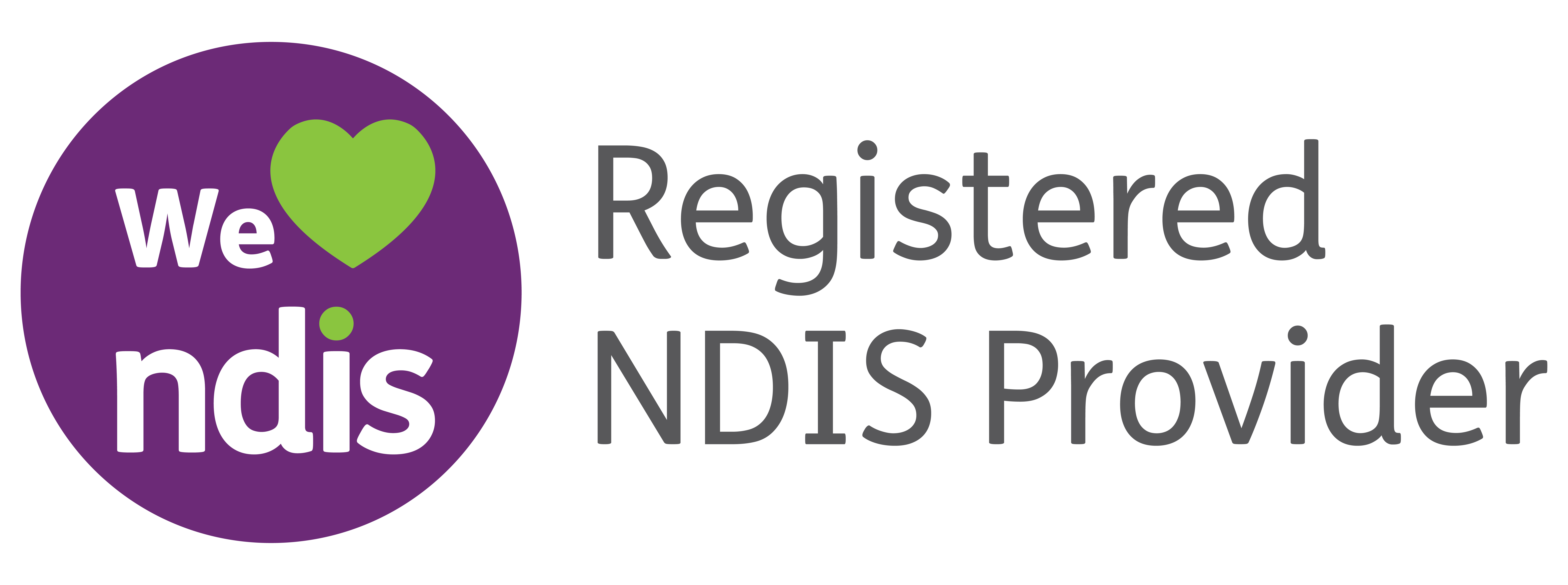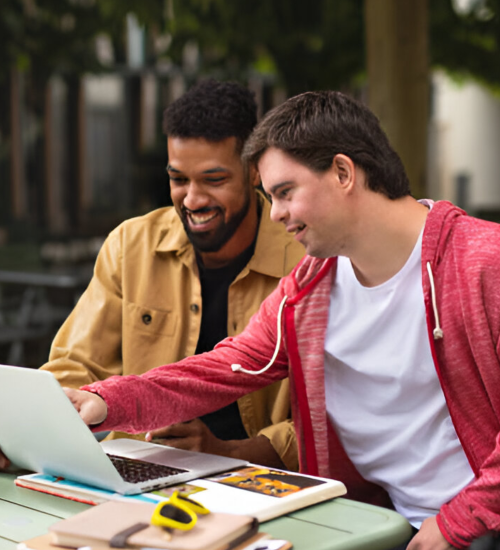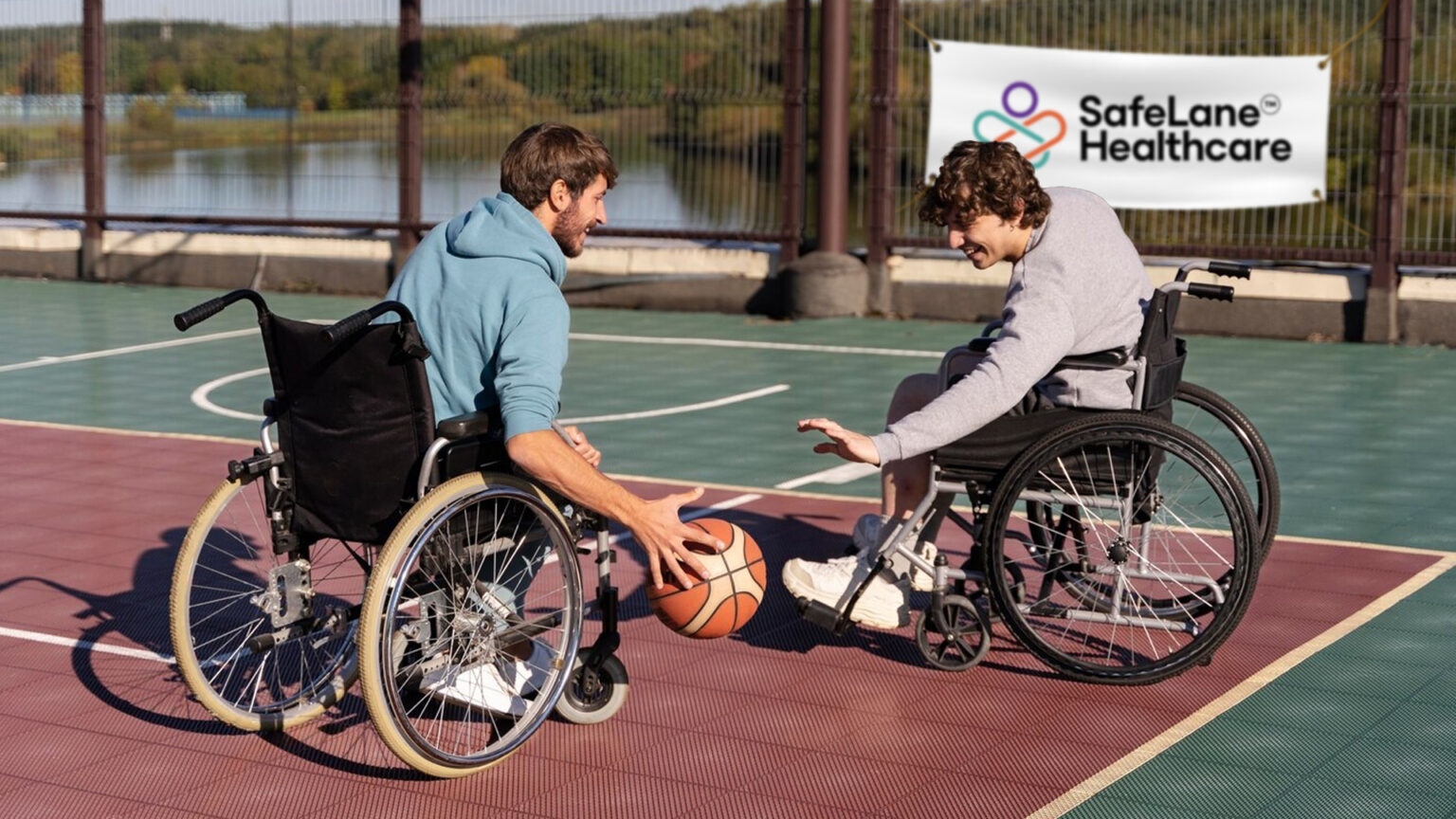
“It’s not the disability that defines you; it’s how you deal with the challenges the disability presents you with.” Living with a disability, whether physical or intellectual, can present unique challenges. Physical disabilities can limit mobility, strength, or coordination, making everyday tasks difficult and sometimes frustrating. These disabilities can be present from birth or result from an illness or injury. When stuck at home, staying active and engaged can be particularly challenging.
Intellectual disabilities affect cognitive functioning, impacting skills like communication, socialising, and self-care. These disabilities, which can stem from genetic factors, pregnancy complications, birth issues, diseases, or toxic exposure, are quite common. Integrating into society can be tough, and being confined at home can reduce motivation and mental stimulation.
However, there are plenty of activities for people with disabilities that can enhance daily life and bring joy to those living with disabilities. Here are 16 fun and engaging activities to try next time you or a loved one wants something to brighten the day.
10 Best Indoor Activities for People With Disabilities
1. Musical Activities
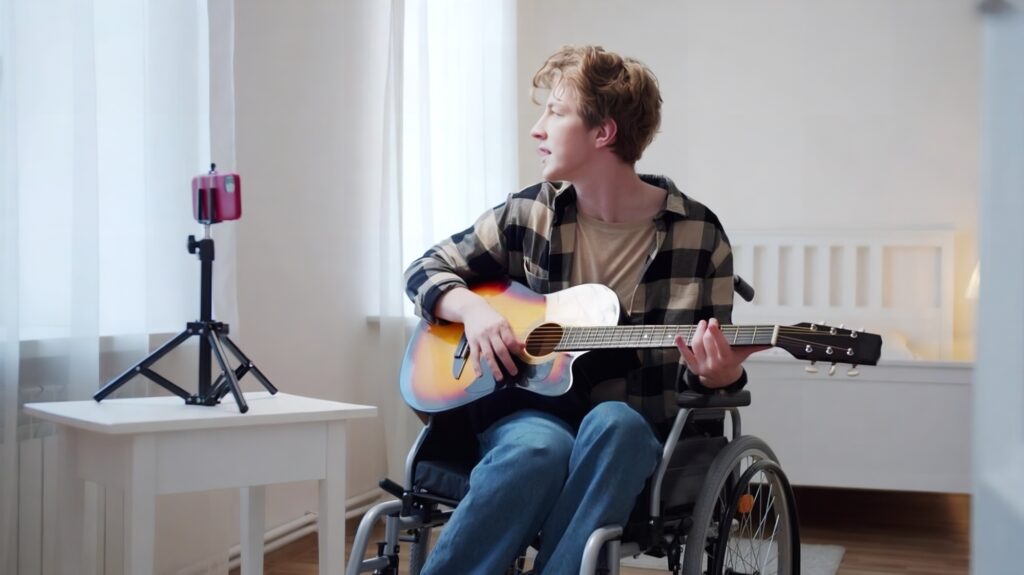
Music therapy is a wonderful and effective way to help people with disabilities, aiding their physical and mental coordination. This form of therapy offers numerous benefits for mental health, such as improving mood, reducing depression and anxiety, managing stress, and fostering healthy self-expression through a creative outlet.
Engaging in musical activities at home can be a delightful and beneficial experience. You or your loved one can enjoy singing, dancing, playing an instrument, or even composing a song together. These activities for people with disabilities bring joy and contribute to physical well-being.
Research indicates that music therapy can help develop and maintain joint and muscle function. Regular participation in these activities for people with disabilities can enhance fine and gross motor coordination, muscle strength, control, and range of motion. Additionally, it can improve cardiopulmonary and respiratory functioning, as well as oral-motor skills. By incorporating music therapy into daily routines, individuals can experience both mental and physical improvements in a fun and engaging way.
2. Practicing Calligraphy
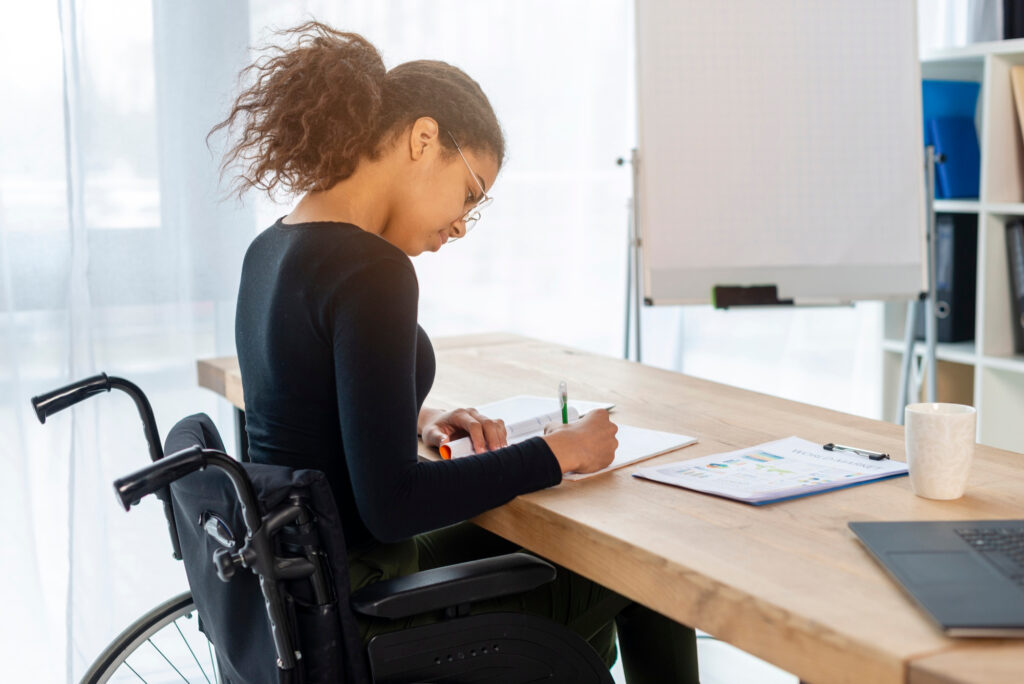
Let’s talk about practicing calligraphy! You know, handwriting isn’t just something we learn as kids—it’s a skill that can bring many benefits throughout our lives. Even as we get older and technology becomes more prevalent, handwriting still plays a crucial role, especially for those with limited mobility or disabilities. It helps with things like using both hands together, building hand strength, and improving thumb movements and finger coordination.
Engaging in calligraphy takes handwriting to a whole new level. It’s not just about writing beautifully—it’s also about sparking creativity and finding therapeutic value. This ancient art form, which originated in China thousands of years ago, has been embraced by many people with disabilities around the world. People like Zhang Wenyou and Kanazawa Shōko have shown how calligraphy can be both inspiring and empowering.
Studies have even found that practising calligraphy can be a form of meditation. The focused attention it requires can help calm the mind and lower heart rate, offering a soothing escape from the stresses of daily life. So, if you’re looking for a relaxing and fulfilling activity, why not give calligraphy a try? It’s not just about the beautiful strokes—it’s about finding peace and joy in the process. And it’s an excellent option among activities for people with disabilities, offering both creative expression and therapeutic benefits.
3. Seated Exercise Classes
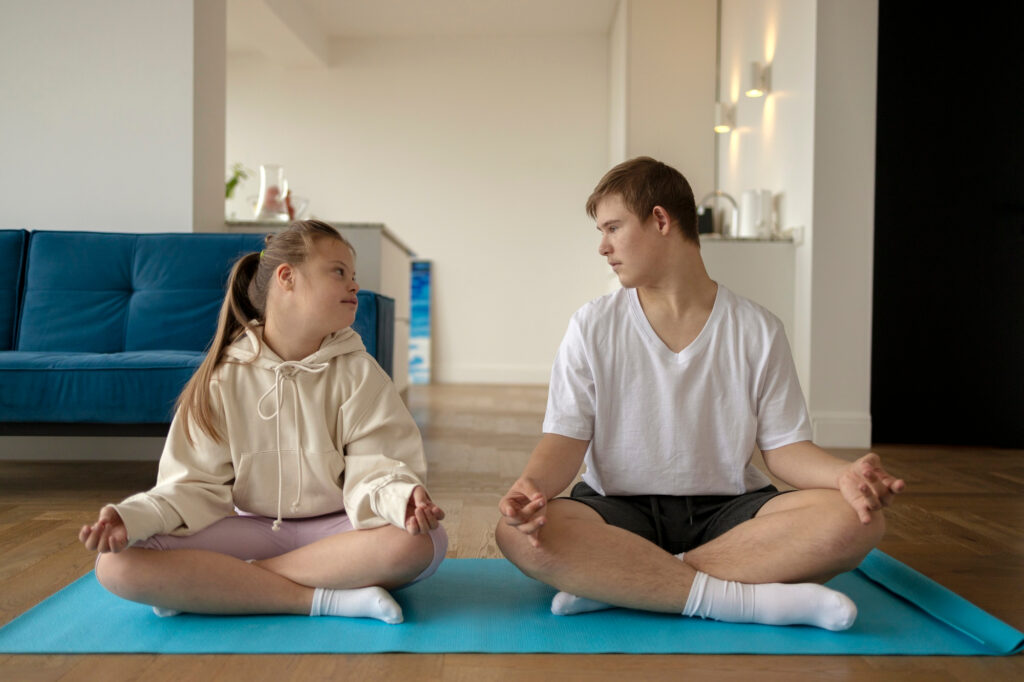
Regular physical activity brings so many good things to our health and happiness. But sometimes, moving around can be tricky, especially if you or someone close to you has limited mobility.
That’s where seated exercises come in. These gentle workouts are perfect for staying active without having to leave your chair. They’re really good for your body, too. They help keep your joints safe while still giving you all the benefits of moving around.
Seated exercises make your muscles stronger, help you stay flexible and balanced, and keep your heart healthy. Plus, they boost your energy and help you think better. They’re great for your mood, too.
You can find lots of different seated exercise classes online. Websites like YouTube and social media have plenty of options. There are also sites dedicated to exercise activities for people with disabilities. So, no matter your abilities, you can find something that works for you.
4. Accessible Video Games
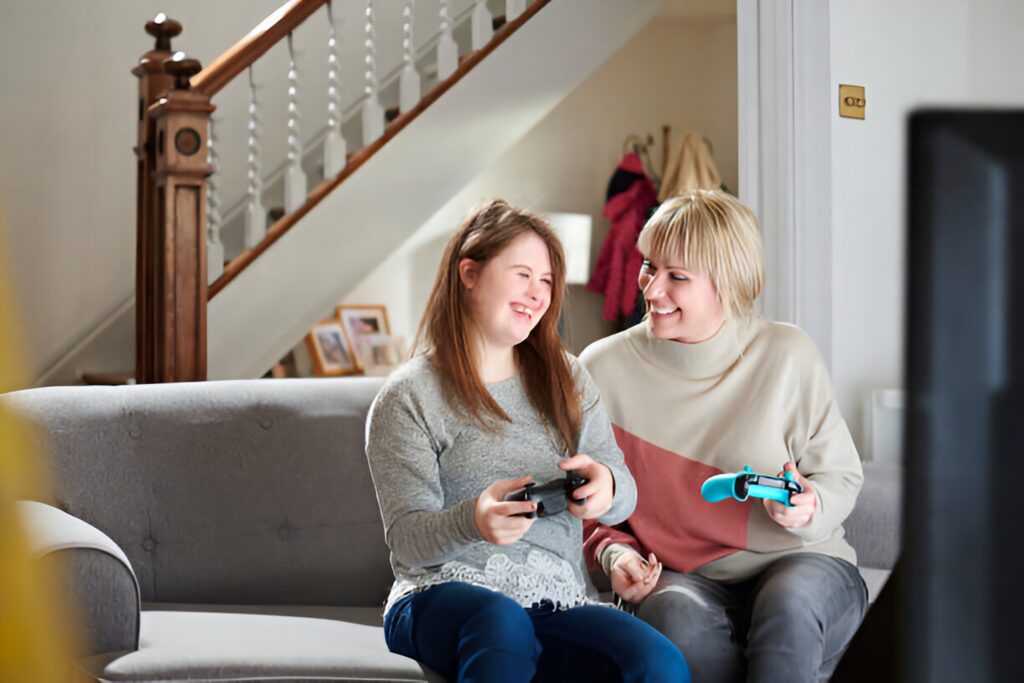
Everyone enjoys social activities and making new friends, but for people with impaired mobility, staying at home can sometimes feel isolating and lead to depression. Thankfully, video games, which became very popular in the early 2000s with the rise of multiplayer options, offer a way to connect with others from the comfort of home.
In the past decade, many independent game developers have worked hard to create accessible video games that cater to the needs of players with various impairments. Some of these wonderful innovations include:
Audio games that can be played without needing to see the screen, one-switch games designed for those with mobility or cognitive impairments, and games tailored for individuals with learning disabilities or complex intellectual needs. Universally accessible games also provide multiple interfaces to support different impairments.
Since 2020, there has been a significant boom in the video game industry. This growth has not only connected people but also expanded the availability of accessible video games. These activities for people with disabilities help break down common gaming and social barriers, providing a way to stay socially active and engaged, even during times of isolation. Accessible video games are a wonderful tool to ensure everyone can enjoy social activities and maintain friendships from the safety and comfort of their homes.
5. Gardening
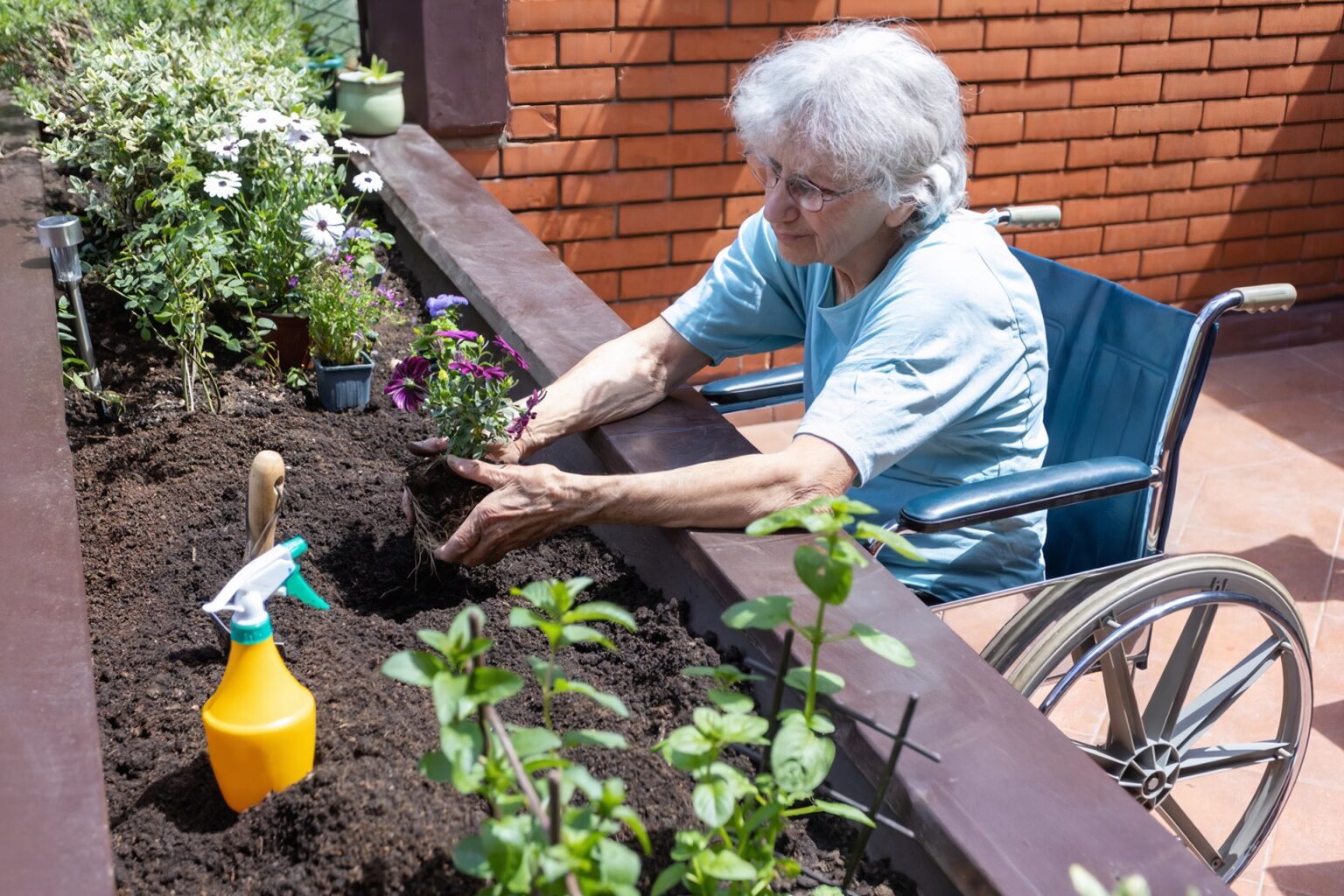
Gardening is a wonderful activity for people with disabilities, offering a range of benefits whether you have a small balcony or a large backyard. It’s a simple and soothing activity that anyone can enjoy. Gardening provides exercise, companionship, mental stimulation, and relaxation. For those with impaired mobility, it helps develop new motor skills and enhances overall well-being.
Engaging in gardening can improve fitness through physical activity, boost confidence by learning new skills, and promote relaxation by reducing stress. It also enhances physical abilities by improving motor skills and expands knowledge about the environment and nature.
There are many activities for people with disabilities that involve gardening. They can water plants, plant seeds, prune bushes, weed the garden, pick flowers, and harvest produce. Gardening truly offers a fulfilling and enriching experience for everyone involved. These activities for people with disabilities can make a significant positive impact on their daily lives.
6. Sensory Play
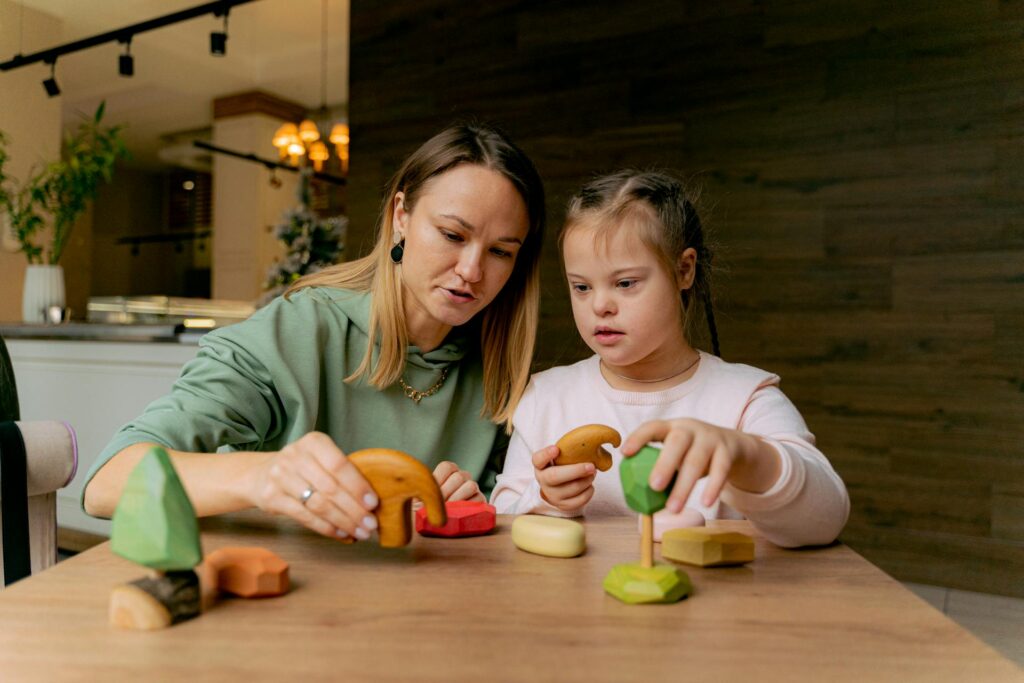
Sensory play is often encouraged for everyone during their early developmental stages. However, for adults with disabilities, such as autism, sensory play at home can be a vital part of continually developing new skills and shaping their understanding of the world. The possibilities for sensory play at home are endless and only require a bit of creativity.
Engaging in sensory activities for people with disabilities can be wonderfully enriching. For example, for sight, you can use jigsaw puzzles, look through a kaleidoscope, create pictures with glow-in-the-dark paint, or organise beads by colour. For touch, playing with Play-Doh, popping bubble wrap, styling someone’s hair, or making a sensory bin with different types of dry rice and pasta can be very enjoyable. A smell can be explored by making candles with essential oils, cooking and smelling different ingredients, playing a matching game with scents, or creating art with scented markers. Taste can be stimulated by having a tea taste test, making and eating an ice cream sundae, sampling various fresh produce, or mixing different foods to discover new flavours. For sound, you can explore different kitchen sounds, listen to wind chimes, describe painting actions aloud, or read stories out loud.
Sensory activities for people with disabilities, whether they are children or adults, can help build new nerve connections in the brain, encourage motor skills development, support language growth, foster problem-solving abilities, and inspire creativity.
7. Learning a New Language
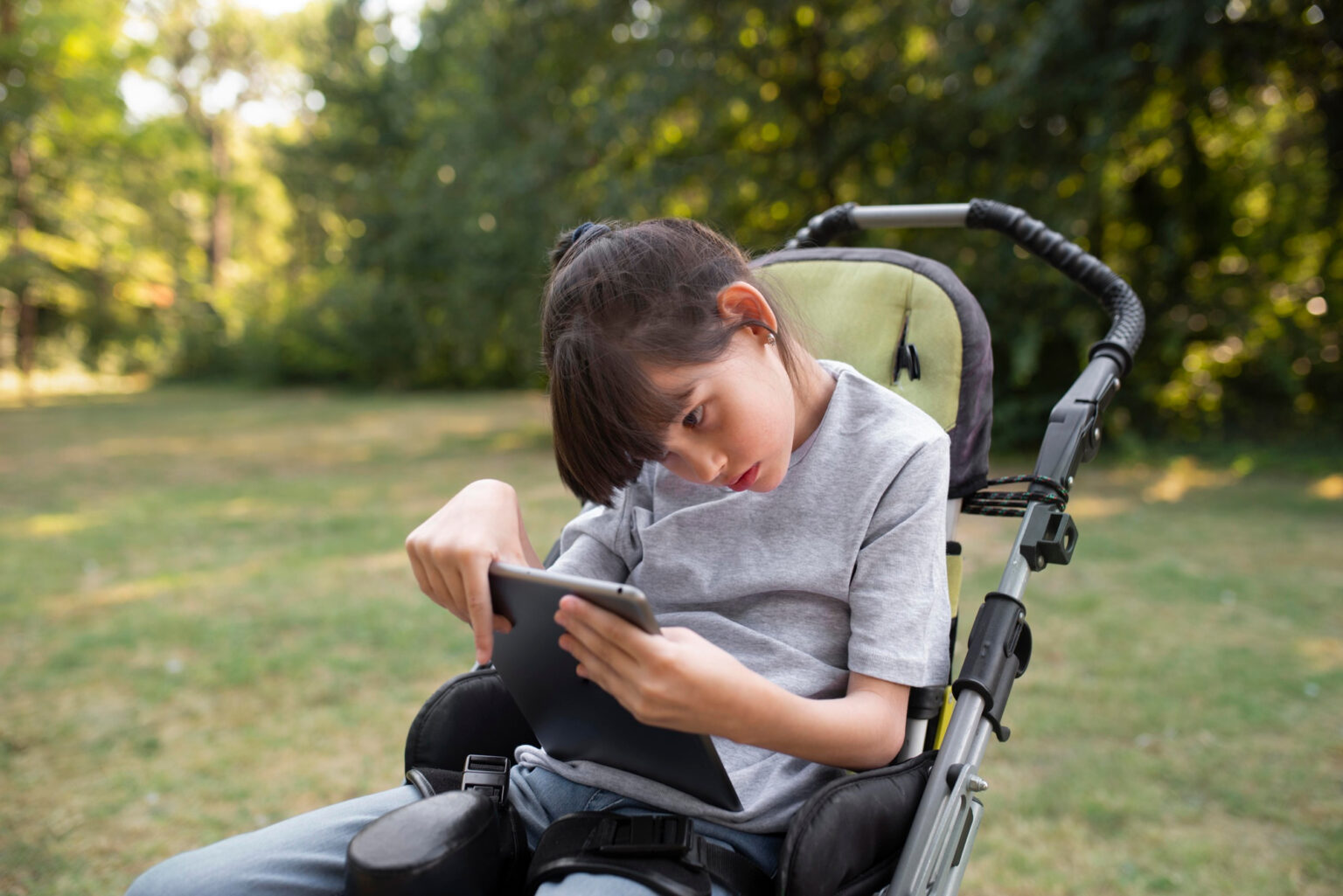
Learning a new language can be especially rewarding for people with intellectual disabilities. It may require extra effort, but with the right support and patience, it can significantly enhance overall development and boost self-confidence. Introducing activities for people with disabilities, like language learning, can seem challenging, but there are several approaches to make the process smoother and less intimidating.
First, it’s essential to develop phonological skills in your native language. Understanding these fundamentals can make decoding the sounds of a new language much easier. This foundational skill is crucial for building confidence and readiness for the next phase of learning.
When starting to learn or teach a new language to someone with a disability, consider beginning with a language similar to your native one. Take it slow, simplify vocabulary to basic terms and phrases, and incorporate multisensory stimulation during lessons. These steps can make the learning process more accessible and enjoyable.
The cognitive benefits of learning a new language are numerous. It can improve memory, problem-solving and critical-thinking skills, concentration, multitasking abilities, and listening skills. For people with disabilities, these activities not only enhance cognitive functions but also elevate self-esteem, offer new perspectives, and foster a deeper connection with another culture. Engaging in activities for people with disabilities, such as learning a foreign language, can open up a world of opportunities and enrich their lives in many meaningful ways.
8. Adaptive Journaling
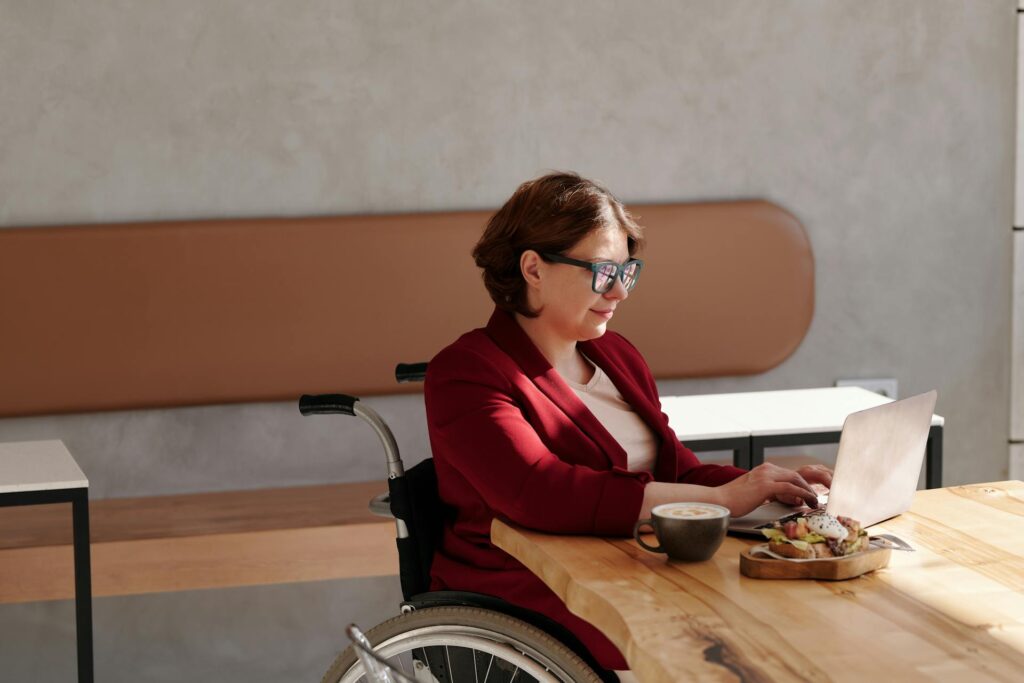
Adaptive journaling can be a wonderful way to ease the tensions of depression, anxiety, and stress. Expressing yourself through writing allows creativity to flourish and can improve your cognitive abilities, enhancing your overall quality of life.
For those living with intellectual disabilities, writing can sometimes feel challenging due to the complex cognitive processes involved. However, with the right guidance and inspiration, adaptive journaling can be a fulfilling activity. When looking for activities for people with disabilities to do at home, adaptive journaling can be a perfect choice. Here are some gentle techniques to get started:
Watching inspirational videos and short films can prompt ideas or observations. Using images that resonate emotionally can serve as sources of inspiration. Utilising templates can guide your writing style. Revising the same piece can encourage new writing styles, angles, and perspectives. Remember, journaling is a private and emotional experience, so write whatever you feel without fear or self-doubt.
Adaptive journaling is a simple and effective way to boost your mood, improve memory, and enhance your emotional and mental well-being. It is especially beneficial when you need a quick outlet for bottled-up emotions. This practice can be a comforting and creative activity for people with disabilities, offering a safe space for self-expression and emotional release.
9. Mindfulness Meditation
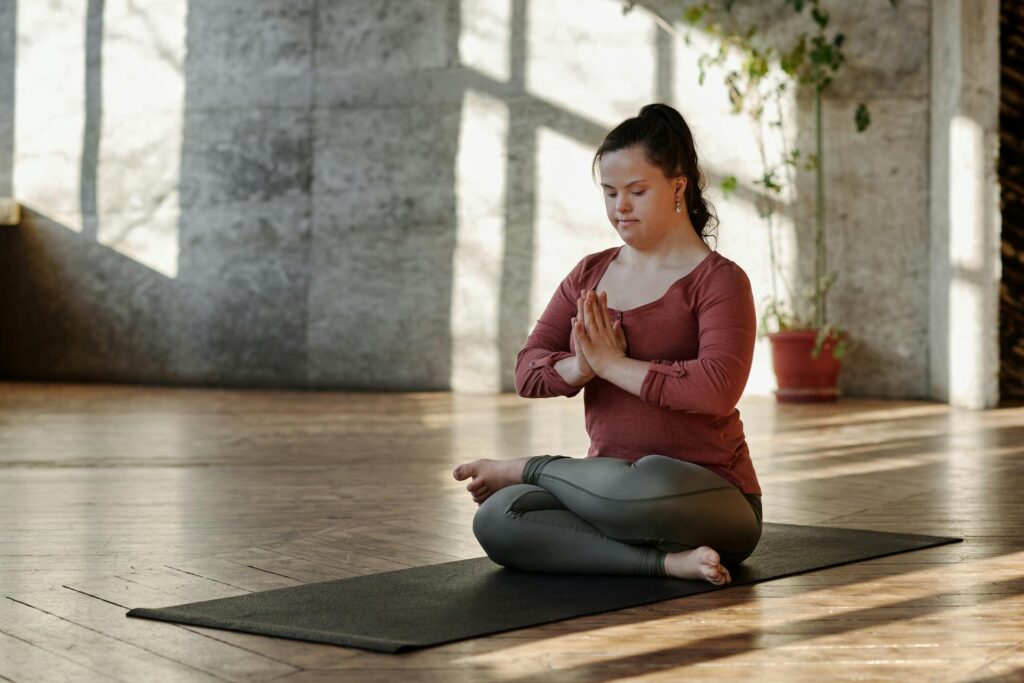
Engaging in mindfulness meditation can be incredibly beneficial for both the body and mind. It helps us stay focused and become more aware of ourselves and the world around us. For those living with disabilities, dealing with issues like fatigue, stress, anxiety, and depression can be tough. Plus, being stuck at home might make things even harder on our mental health. That’s where mindfulness meditation comes in. It’s a way to gain a sense of control and find some peace, while also learning healthy ways to cope.
Mindfulness meditation comes in two main types:
Focused-attention meditation: This involves concentrating on one thing, like a thought, sound, or even your breath. By doing this, you can clear your mind of distractions and feel more centred.
Open-monitoring meditation: Here, you’re encouraged to be aware of everything around you and inside you. This includes your thoughts, feelings, and environment. It’s a way to recognise what’s going on inside you and around you without judgment.
If you or your loved one are interested in trying mindfulness meditation, there are lots of resources available online and through apps. These can help you practice safely and comfortably at home. And remember, mindfulness meditation can be a great activity for people with disabilities, offering a way to relax and find some inner peace.
10. Arts & Craft Therapy
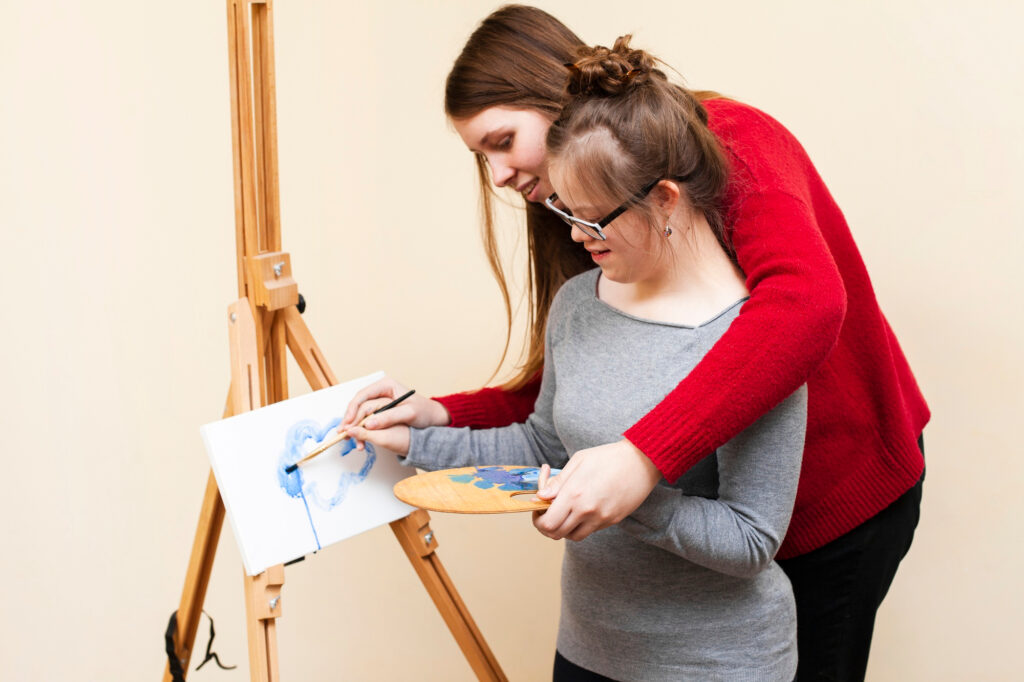
Engaging in creative expression through arts and crafts can greatly enhance the mental, physical, and emotional well-being of people with disabilities. It provides a wonderful opportunity for self-expression and helps in developing new coping strategies.
Even if you or your loved one have limited abilities, art therapy opens up a world of possibilities. It offers a safe space to explore feelings, resolve emotional conflicts, build self-awareness, improve reality orientation, reduce anxiety, and boost self-esteem. If you or your loved one are at home and looking for meaningful activities for people with disabilities, consider these creative arts and crafts ideas:
Develop origami designs, enjoy beading activities, mould and shape with clay, craft paper mache creations, decorate with paint, and experiment with fabric.
Art therapy is a wonderful way to inspire creativity and is suitable for people of all ages and abilities. Whether using canvas, paper, paint, or clay, you and your loved one can enjoy countless hours of inspiration and create your own personal masterpieces. These activities for people with disabilities not only provide a creative outlet but also contribute to a fulfilling and joyful experience.
Top 6 Day Programs Activities for Adults With Disabilities in Melbourne
Living with a physical or intellectual disability can be challenging, and it’s understandable to feel hesitant or unsure about trying new activities. However, stepping out of your comfort zone, believing in yourself, and exploring new interests can be incredibly rewarding for both your mind and body. Whether it’s learning to play an instrument, tending to a garden, or creating a piece of art, there are countless activities for people with disabilities that can be enjoyed at home.
Melbourne, known for its vibrant laneways, world-class coffee, and rich arts scene, offers a wealth of experiences for everyone, including those with disabilities.
Discover some of our favourite Melbourne experiences, attractions, and disability day programs Melbourne offers. These day program activities for adults with disabilities are designed to inspire and engage, helping you find joy and fulfillment in your daily life.
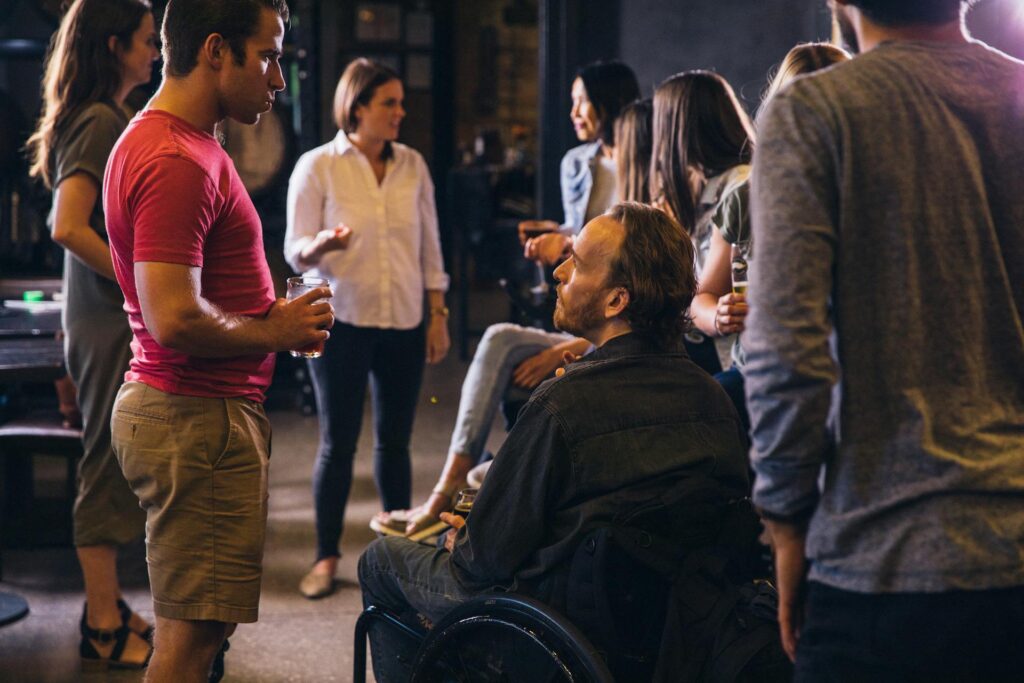
1. Live and Learn
Melbourne is home to a variety of inclusive museums. Many venues under the Museums Victoria group welcome service animals, provide mobility access, offer free entry to Companion Card holders, and have accessible tours and programs. These museums are perfect for activities for people with disabilities.
- Melbourne Museum: Known as ‘the autism-friendly museum’, Melbourne Museum has worked with AMAZE to create Social Stories for visitors on the spectrum. They also provide sensory maps and have quiet times during weekdays.
- Scienceworks
- Royal Exhibition Building
- Immigration Museum
2. Get Into Some Sport
Melbourne’s sporting venues are top-notch and inclusive, making them ideal for activities for people with disabilities. They offer accessible seats, parking, multiple entrance options, and hearing loops. Most also accept the Companion Card.
- Melbourne Cricket Ground
- Marvel Stadium: Offers a sensory room.
- Rod Laver Arena
- Margaret Court Arena
- AAMI Park
The Australian Sports Museum also offers accessible parking, free entry for companion and carer cards, and welcomes service animals.
3. Find Some Fun at a Festival
Melbourne hosts numerous accessible festivals throughout the year, perfect for day program activities for adults with disabilities.
- Melbourne Writers Festival
- Melbourne Fringe Festival
- Rising Festival
- Melbourne International Comedy Festival
- Melbourne International Jazz Festival
- Melbourne International Arts Festival
- Ability Fest
The new Alter State festival celebrates disability, creativity, and culture, offering a unique experience for everyone.
4. Explore the Art World
Melbourne’s premier galleries provide fantastic disability day programs in Melbourne. They offer mobility access, assisted listening, free entry to Companion Card holders, and accessible tours and programs.
- ACMI: Welcomes registered assistance animals and provides free hearing devices.
- National Gallery of Victoria (NGV): Offers options for those with vision or hearing impairments, sensory sensitivities, and mobility issues.
- Arts Centre Melbourne
- ArtVo
5. Meet Mother Nature
Melbourne’s outdoor venues offer accessible support options, perfect for activities for people with disabilities who love nature.
- Royal Botanic Gardens Victoria
- Melbourne Zoo
- SEA LIFE Melbourne Aquarium
6. Engage in the Community
If a big day out feels too much, there are many local activities for people with disabilities. The ‘Melbourne What’s On’ guide often lists inclusive events, and ‘Access for All Abilities (AAA) Play’ connects people with disabilities to over 50 accessible sporting activities in inner Melbourne. SafeLane Healthcare offers group activities and therapeutic programs, both in person and online, including a popular art therapy class.
These options ensure that day program activities for adults with disabilities in Melbourne are both enjoyable and accessible, making it easy to find something perfect for everyone.
How Can SafeLane Healthcare Help?
Looking for an adventure? We’re here to support you every step of the way! At SafeLane Healthcare, we specialise in providing personalised care and support for individuals with disabilities, tailored to meet your unique needs and preferences. Whether you need a companion for an outing or some ideas for your next adventure, we’re here to help.
No matter where you are, we’ve got you covered. If you’re outside of Melbourne or planning a trip, we also have a branch office in Sydney, NSW.
If you need services such as support coordination, group activities, social events, daily life assistance, creative therapies, and more, reach out to us today. We’re here to make your life easier and more enjoyable.
Wrap-up
In life’s diverse tapestry, inclusivity binds us, guiding those with disabilities through resilience and creativity. Our response to challenges defines us, not the challenges themselves. From music therapy to calligraphy, from seated exercise to accessible video games, a world of activities awaits. These endeavours empower us, transcending limitations to forge connections and celebrate individual brilliance. In Melbourne, inclusivity permeates every aspect of life, from museums to festivals, offering belonging and joy to all. Let’s journey together, embracing diversity and uncovering humanity’s true essence – woven with compassion, understanding, and limitless potential.
Subscribe Our Newsletter
Join our newsletter for community updates and resources.
